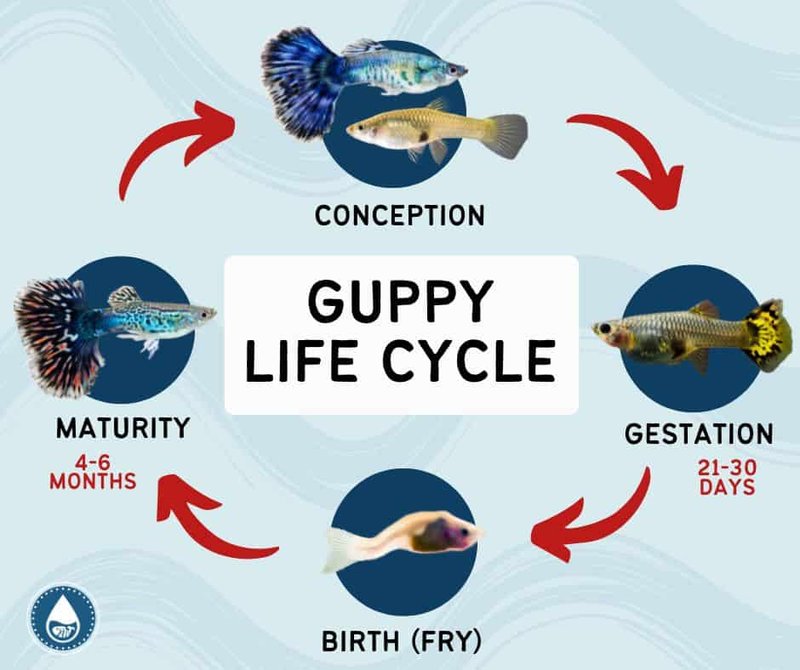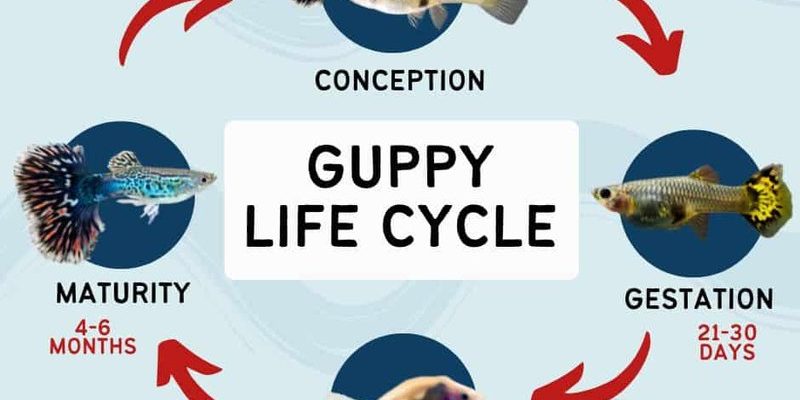
Guppy tapeworms belong to a family called *Lepocreadiidae* and are particularly known for their symbiotic relationship with their guppy hosts. Understanding their life cycle not only sheds light on their behavior but also highlights the delicate balance of aquatic ecosystems. This article will break down the various stages of the guppy tapeworm’s life cycle, exploring its behavior and the impact it has on its environment. So, grab a cup of coffee and let’s dive into the depths of this intriguing underwater saga!
The Beginning: Eggs and Hatching
The story of the guppy tapeworm begins with the eggs. These eggs are usually laid in freshwater environments where guppies thrive. When the temperature and conditions are just right, these tiny eggs hatch into larvae. You might be wondering how such small things can become complex organisms, but in the world of parasites, it’s all about adaptation!
The larvae are not yet tapeworms. These little guys swim around in the water, looking for their first host—usually a guppy. Their survival depends on finding a suitable host quickly. In this larval stage, think of them as tiny hitchhikers. They have to attach themselves to a fish to continue their life cycle. If they’re lucky and find a guppy, they’ll begin a new phase of their life, leading them to develop into mature tapeworms.
Stage Two: Attach and Grow
Once a guppy larvae is firmly attached, the transformation begins. You can picture it like a superhero’s origin story. They start to grow and develop into adult tapeworms right inside the guppy’s intestines. This is where things get really interesting!
The adult guppy tapeworm can grow to a few centimeters long, depending on the species. Inside the guppy, they start to absorb nutrients from the host’s food, which unfortunately can lead to health problems for the fish. The guppy might become lethargic, lose its appetite, or even die if the infestation is severe. It’s a delicate dance of survival, where both host and parasite are trying to stay alive, but one often suffers for the other’s benefit.
Reproduction: A New Generation
Here’s where the cycle completes itself. Adult tapeworms are not just sitting idly; they’re busy reproducing! They often release their eggs back into the water from the guppy, which can start the whole life cycle again. Imagine a conveyor belt of tiny eggs ready to hatch into new larvae and start the search for more guppies.
This stage of reproduction is crucial. The more guppy tapeworms that can successfully lay eggs, the more chances they have to infest new hosts. This can lead to a significant increase in the tapeworm population if not kept in check. The cycle continues, and you can see how quickly things can spiral if conditions are favorable for the tapeworms.
Environmental Factors: The Impact of the Life Cycle
The guppy tapeworm’s life cycle is heavily influenced by environmental factors. For example, water temperature, oxygen levels, and even the presence of other fish can affect how successfully these tapeworms can thrive.
In warmer waters, the life cycle may speed up, allowing for more rapid reproduction and a potential boom in tapeworm populations. This, in turn, affects the health of the guppy populations and can disrupt the balance of the aquatic ecosystem. Healthy ecosystems rely on a balance of species, so if guppy tapeworms become too prevalent, it can lead to declines in guppy populations and affect other species in the food chain.
Host Behavior: Guppies and Parasite Management
You might be curious about how guppies cope with having guppy tapeworms. Some fish display interesting behaviors to help manage these parasites. For instance, they may engage in more frequent cleaning behaviors, seeking out cleaner fish that help remove parasites from their bodies.
Additionally, healthy guppies might develop immunity over time, allowing them to coexist with low levels of tapeworms without significant harm. This relationship showcases the complex interactions that can exist between host and parasite. It’s not always a straightforward battle; sometimes both can find a way to survive alongside each other.
The Bigger Picture: Why Understanding Tapeworms Matters
Understanding the life cycle of the guppy tapeworm is not just a curiosity for fish enthusiasts; it has broader implications for our understanding of aquatic ecosystems. As we learn more about these tiny parasites, we can better appreciate the intricate web of life in our waters.
For aquarists, knowing about these tapeworms can be crucial for maintaining healthy fish populations. Early intervention when guppies show symptoms of infestation can save them from suffering. Plus, it highlights the importance of regular tank maintenance and monitoring of water quality. It’s all interconnected, and each part of the ecosystem plays a role in supporting life.
The life cycle of the guppy tapeworm is a remarkable example of nature’s complexity. From tiny eggs to resilient adult tapeworms, their journey is full of challenges and adaptations. While they may seem like simple parasites, their impact on guppies and aquatic ecosystems is profound.
Understanding their life cycle helps us appreciate the balance of life in the water. As we keep our aquariums and natural water bodies healthy, we can foster environments where both guppies and even their tapeworm companions can thrive—each playing their role in the grand tapestry of life. So next time you spot a guppy swimming happily, remember that there might be a tiny story happening out of sight, a testament to the wonders of nature.

